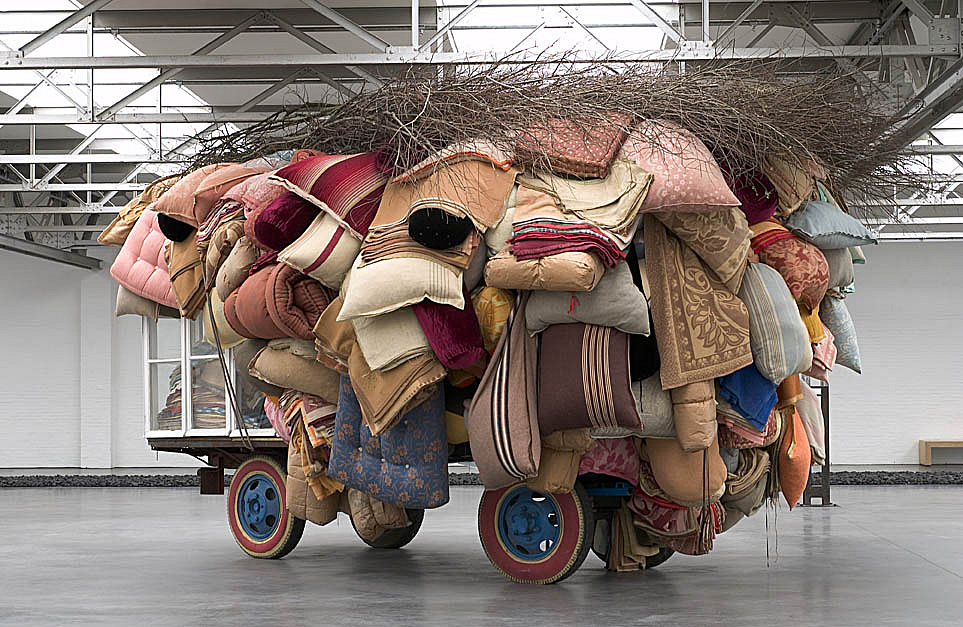About four years ago De Pont exhibited a number of works by Berlinde De Bruyckere (Ghent, 1964) for the first time. The sculptures and drawings from the series Sewn Together received many positive responses and have been shown frequently since then. Internationally as well, interest in the work of this artist has risen considerably over the past few years, as evident from presentations at the Muhka in Antwerp, the Venice Biennial and the Saatchi Gallery in London.
De Pont is now organizing a large exhibition of her work. This will be accompanied by a publication, with the same title, containing texts by Barbara Baert and Harald Szeeman.
The work of Berlinde De Bruyckere is marked by corporality. Her drawings and sculptures are literally portrayals of bodies and shapes of bodies whose anatomy is often contorted and disfigured. Particularly evident is the ‘skin’ which, as a fragile surface, covers the body and provides protection. With certain works human hair and, with her animal figures, hides also seem intended for protection and covering. As such these works relate to De Bruyckere’s early sculptures in which she used blankets as a metaphor for vulnerability and shelter. Under a blanket, though, one can also hide and suffocate. These positive and negative aspects are consistent with De Bruyckere’s image of mankind. With respect to the Sewn Together sculptures, she has remarked, ‘They have been stitched together with black thread, from all kinds of separate pieces. At a certain point, there isn’t much left of the “humanity” image in my view. When I think about how we, as human beings, respond to certain situations, how we deal with each other, then I find that we can be very ugly at times; and that is when the image of a beautiful mankind falls apart for me. With those Sewn Together sculptures I tried to go back to a single image of mankind by using fragments of it, stitching it back together and composing it again. And with that I did use the the blanket as a kind of skin that joins the pieces of man and creates a new image.’
